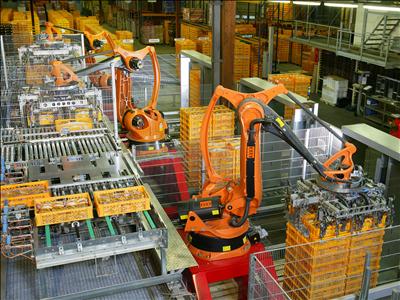Don't blame automation for high unemployment: another view

Someone once pointed out that if the telecom industry still relied on its pre-1960s operational model which employed live operators at every switchboard, telecom firms would now need to have all 300-million-plus US residents on their payrolls to handle the volume.

Talk about full employment. Talk about low productivity. Now, most industries are automating or have automated many of their manual tasks (or handed them off to customers), leaving wide gaps in employment opportunities. Digitization is replacing many manual tasks -- not just on assembly lines, but also for jobs ranging from paralegals to even sportswriters.
So, automation and robotics have become convenient scapegoats for the state of the US economy, battered by persistently high unemployment.
Nevertheless, output is now at record levels. There are two reasons we've been able to produce a lot more with fewer workers. There's offshore production, in which goods and services are generated overseas, mainly in Asia. Then there's automation -- which increasingly may bring production back to these shores, but without ramping up hiring.
However, as David J. Lynch, writing in Bloomberg BusinessWeek, points out, technology spending, while robust, isn't necessarily growing fast enough to explain the situation. "The classic relationship between rising output and rising employment—known as Okun’s Law—now appears to be broken," he points out. "If the law, which postulates that every 3 percent gain in output should reduce the jobless rate by a percentage point, still applied, then today’s nearly 9 percent rate would be about 1 percent."
So, with all this output, employment should be soaring as well. But total employment, at least in the United States, is actually lower than it was a decade ago. The US Bureau of Labor Statistics says about 140.8 million people were working as of December 2011, off the peak of 146 million in 2007, and not much higher than 137 million a decade ago. But output hasn't been too shabby in recent times. As Lynch puts it:
"The U.S. produces almost one-quarter more goods and services today than it did in 1999, while using almost precisely the same number of workers. It’s as if $2.5 trillion worth of stuff—the equivalent of the entire U.S. economy circa 1958—materialized out of thin air."
Yet, Lynch says, total capital expenditures on technology and automation are "still barely running ahead of replacement costs."
The culprit, he argues, is lack of demand. "By the Congressional Budget Office’s reckoning, total output in the third quarter was 5 percent below potential. That amounts to almost $800 billion of missing demand—enough to occupy both man and machine."
Of course, that begs the question of what it will take to rev up demand. The global economy is one part of the solution -- all that offshoring of jobs has created growing middle classes in emerging economies, especially in Asia. And the efficiencies technology has brought to our manufacturing base mean North American production sites can now compete better in a global economy.
This post was originally published on Smartplanet.com